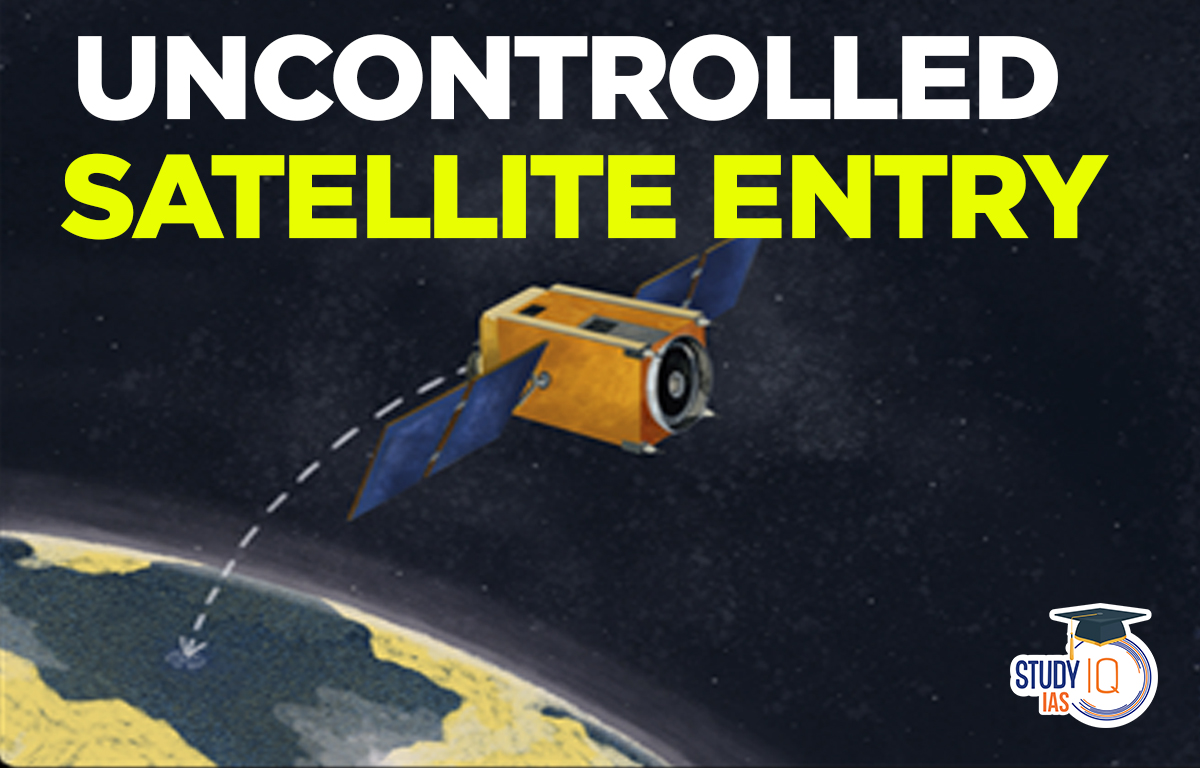Table of Contents
Context: Experts and dignitaries have signed a letter calling for both national and multilateral efforts to restrict uncontrolled re-entries of satellites.
Background of Uncontrolled Satellite Entry
- Currently, there are more than 6,000 satellites in orbit, most of them in low-earth (100-2,000 km) and geostationary (35,786 km) orbits.
- Rocket launches: Rockets work on multiple stages. Once a stage has performed its action, the rocket sheds it.
- Some rockets shed all their larger stages before reaching the destination orbit while others carry the payload to the orbit, and then perform a deorbit manoeuvre to begin their descent.
- In both cases, rocket stages come back down to the earth — in controlled or uncontrolled ways.

What is Uncontrolled Re-Entry of Satellites?
- Uncontrolled re-entry is the phenomenon of rocket parts falling back to earth in unguided fashion once their missions are complete.
- The path taken by the rocket towards Earth is determined by its shape, angle of descent, air currents and other characteristics.
- As it falls, it disintegrates. The smaller pieces fan out, and the potential radius of impact will increase on the ground.
- Majority of the debris have landed in oceans principally because earth’s surface has more water than land.
Effects of Uncontrolled Re-entry
- Damage to aircraft: Debris from uncontrolled re-entry can impact anywhere on an aircraft, which may damage it, causing potential loss of lives.
- Contamination: Many parts of satellite contain chemicals that are not healthy for environment. They can contaminate both land and water.
- Human casualty: Even small parts can be deadly due to the speed at which they strike. This can even cause potential death.
Controlling Re-entry
- Global Convention: Currently, there is no international binding agreement to ensure rocket stages always perform controlled re-entries.
- The Liability Convention 1972 requires countries to pay for damages caused due to satellite re-entry, not prevent them
- Aiming Oceans: Experts have called for bodies to aim for an ocean in order to avoid human casualties.
- Modern design: Advances in electronics and fabrication have made way for smaller satellites, which are easier to build and launch.
- These satellites experience more atmospheric drag and thus are also likelier to burn up during re-entry.
Space Liability Convention, 1972
- Objective: The convention was created to supplement existing and future national laws providing compensation to parties injured by space activities.
- According to the Liability Convention, countries bear international responsibility for all space objects that are launched from their territory.
- Regardless of who launches the space object, if a space object was launched from State A’s territory, or from State A’s facility, or if State A caused the launch to happen, then State A is fully liable for damages that result from that space object.
- If two states work together to launch a space object, then both the partner countries are jointly and severally liable for the damage that object causes.
- Drawbacks: Claims must be brought on the state level only. Even if one person is making claim under the convention, he/she must arrange for his or her country to make a claim against the country that launched the space object.


 Accredited Social Health Activists (ASHA...
Accredited Social Health Activists (ASHA...
 World’s 1st Unique Q-Shield Platform a...
World’s 1st Unique Q-Shield Platform a...
 IB ACIO Recruitment Notification 2025 Ex...
IB ACIO Recruitment Notification 2025 Ex...





















